The Amano Shrimp, scientifically known as Caridina multidentata, is a fascinating and beneficial addition to any freshwater aquarium. Known for their algae-eating abilities, these crustaceans are popular among aquarists for their unique appearance and peaceful temperament.
Table of Contents
The name Caridina multidentata comes from Latin, where multi means “many” and dentata means “toothed,” referring to the numerous teeth-like structures on their bodies.
Native to freshwater and brackish waters in Japan and Taiwan, they thrive in tanks with plenty of hiding places and surfaces for grazing. They are bottom-dwellers and are often seen scavenging for food. These crustaceans are diurnal and exhibit solitary behavior, although they can be kept in groups.
Omnivores with a preference for algae, they consume algae wafers, blanched vegetables like zucchini and spinach, and occasionally protein-rich foods like bloodworms or brine shrimp. Their diet helps maintain their health and vibrant coloration.
They have a translucent body with a gray or greenish hue and can grow up to 2 inches in length. They possess a distinctive row of dark spots along their sides, which can vary in color based on their diet. Their bodies are divided into two main sections: the cephalothorax and the abdomen, covered by a hard shell.
They thrive in tanks with smooth rocks, driftwood, and dense plants like Java Moss and Marimo Balls. They require clean, well-oxygenated water and a mature filter.
Extremely peaceful, they can be kept with small, non-aggressive fish like tetras and rasboras. They are active scavengers, often seen cleaning algae off tank surfaces. They should be protected from large, aggressive species that may prey on them.
Breeding in captivity is challenging as their larvae require brackish water to develop. Females produce up to 2,000 eggs, and the larvae must be transferred back to freshwater after metamorphosis.
Fun Facts
- Popularized by Takashi Amano, a renowned aquascape artist.
- They molt their exoskeletons approximately once a month and often consume the old exoskeleton to replenish minerals.
- Known to steal food from larger fish, showcasing their fearless nature.
A study on the behavioral response to predatory stimuli found that they exhibit quicker evasion responses in fish-contaminated water compared to clean water. This suggests that they are more cautious and responsive to potential threats in environments where predators are present.
The Amano Shrimp is an interesting species due to its unique role in maintaining aquarium cleanliness and its intriguing behavior. Its ability to consume large amounts of algae makes it invaluable for aquarists, and its peaceful nature ensures it can coexist with a variety of tank mates.
A wonderful addition to any freshwater aquarium, their algae-eating abilities, peaceful temperament, and unique appearance make them a favorite among aquarists. With proper care and the right environment, they can thrive and contribute significantly to the health and beauty of an aquarium.
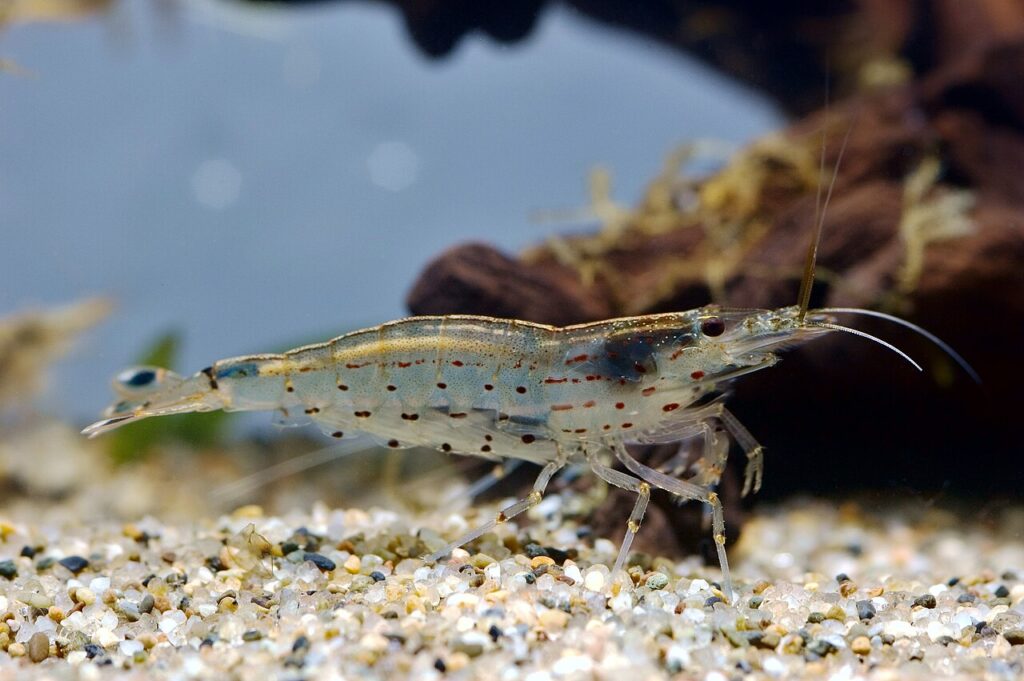
Amano Shrimp Key Information
One of the most striking features of the Amano Shrimp is its vibrant coloration. These small crustaceans display a range of colors, from translucent gray to greenish hues, with distinctive dark spots along their sides. The intensity and shade of their coloration can vary depending on their diet, environment, and overall health. A well-nourished and healthy Amano Shrimp is a true delight to behold, adding a pop of color and visual interest to any aquarium.
| Family | Atyidae |
| Origin | Japan and Taiwan |
| Price | $5-$15 per individual |
| Common Names | Japanese Shrimp, Yamato Shrimp, Algae Shrimp |
| Variants | None |
| Ideal Tank Size | 10 gallons or larger |
| Water Parameters | pH 6.5-8.0, Temperature 65-85°F (18-29°C) |
| Lifespan | 2-3 years |
| Full Size | 2 inches (5 cm) |
| Natural Environment | Freshwater and brackish waters |
| Behavior | Peaceful, solitary, and diurnal |
| Habitat Preference | Rocky, planted areas with hiding places |
| Aquarium Decoration | Smooth rocks, driftwood, and dense plants like Java Moss and Marimo Balls |
| Ideal Tank Mates | Small, non-aggressive fish like tetras and rasboras |
| Fish to Avoid | Large, aggressive species that may prey on them |
| Best Foods/Diet | Algae wafers, blanched vegetables, and protein-rich foods like bloodworms or brine shrimp |
| Disease | Susceptible to bacterial and fungal infections |
| Sex-Switch | No |
| Gender Differences | Females are slightly larger and have a more rounded abdomen |
| Care Level | Easy to moderate |
| Breeding Level | Challenging, requires brackish water for larvae development |
Ideal Tank Mates for Amano Shrimp
When selecting tank mates for Amano Shrimp, it’s essential to choose peaceful, non-aggressive species that won’t pose a threat to these small crustaceans. Amano Shrimp are known for their calm and gentle nature, making them compatible with a variety of fish that share similar temperaments and environmental requirements.
Ideal tank mates for Amano Shrimp should be small, peaceful, and adaptable to the same water parameters. They should also have a similar diet and not compete for food or resources. It’s crucial to avoid large, aggressive fish that may view the shrimp as prey or cause stress through constant harassment.
Here are 10 ideal tank mates for Amano Shrimp, each with their unique characteristics and compatibility factors:
Neon Tetras
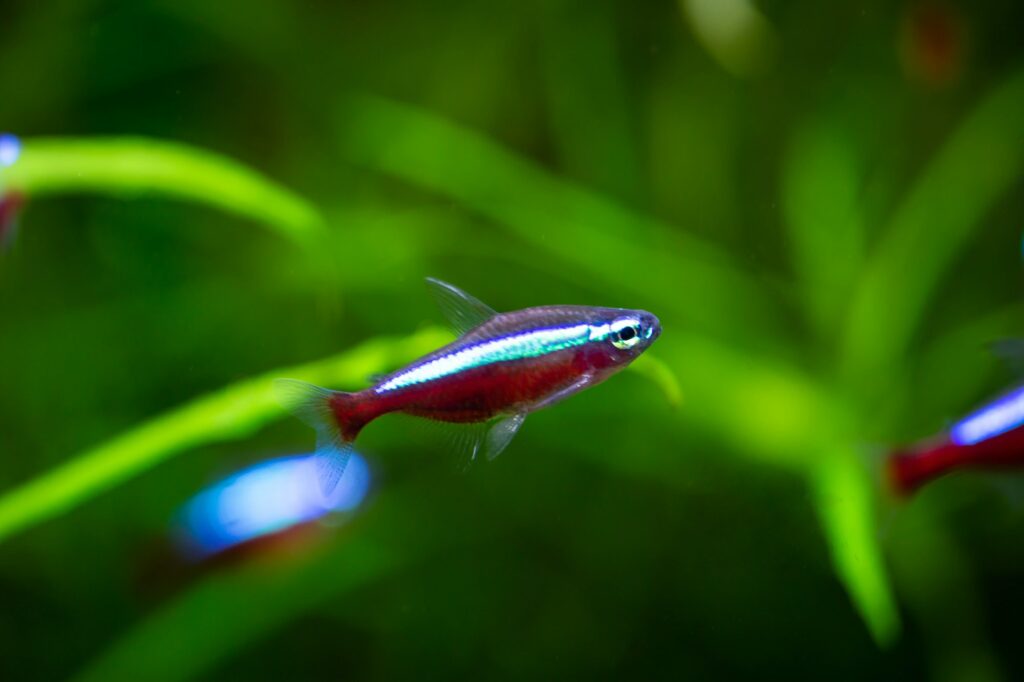
Neon Tetras are a popular choice for Amano Shrimp tank mates due to their small size, peaceful nature, and vibrant coloration. These schooling fish add visual interest to the aquarium without posing a threat to the shrimp. Neon Tetras prefer similar water parameters and can coexist harmoniously with Amano Shrimp, as they occupy different levels of the tank.
| Common/Market Names | Neon Tetra, Blue Neon |
| Price Range | $1-$3 per fish |
| Care Level | Easy |
| Behavior | Peaceful, schooling |
| Life Span | 5-8 years |
| Max Size | 1.5 inches (4 cm) |
Cherry Barbs
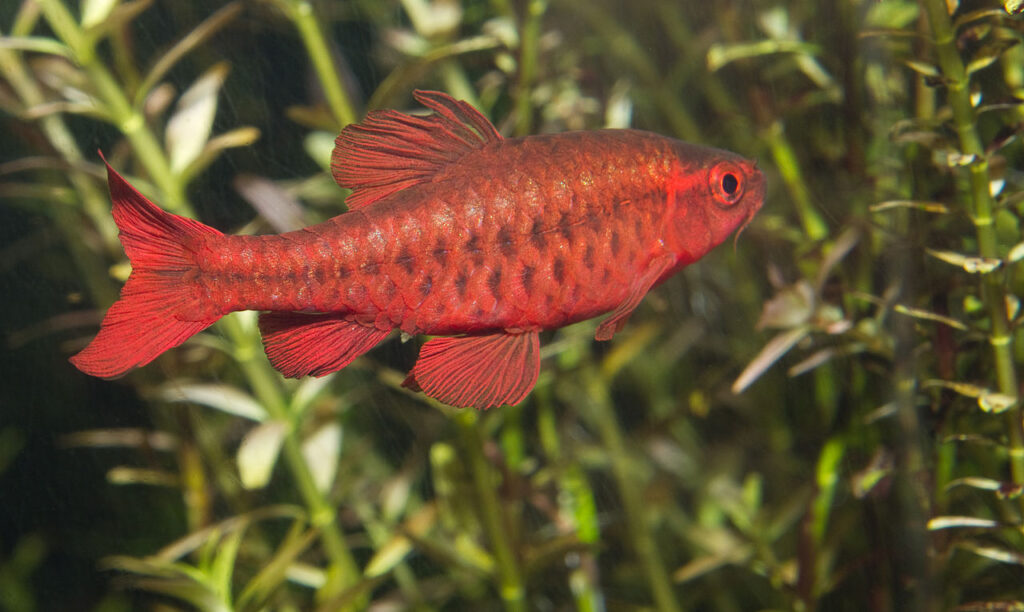
Cherry Barbs are another excellent choice for Amano Shrimp tank mates. These small, colorful fish are known for their peaceful temperament and adaptability to various water conditions. Cherry Barbs are omnivores and will not compete with the shrimp for food, as they prefer a diet of small invertebrates and plant matter.
| Common/Market Names | Cherry Barb, Rosy Barb |
| Price Range | $2-$5 per fish |
| Care Level | Easy |
| Behavior | Peaceful, schooling |
| Life Span | 4-6 years |
| Max Size | 2 inches (5 cm) |
Harlequin Rasboras

Harlequin Rasboras are a striking and peaceful species that make excellent tank mates for Amano Shrimp. These small schooling fish have a unique triangular shape and a vibrant red and black coloration. Harlequin Rasboras are active swimmers and will not bother the shrimp, as they prefer to occupy the middle and upper levels of the tank.
| Common/Market Names | Harlequin Rasbora, Red Rasbora |
| Price Range | $2-$4 per fish |
| Care Level | Easy |
| Behavior | Peaceful, schooling |
| Life Span | 5-8 years |
| Max Size | 1.5 inches (4 cm) |
Pygmy Corydoras
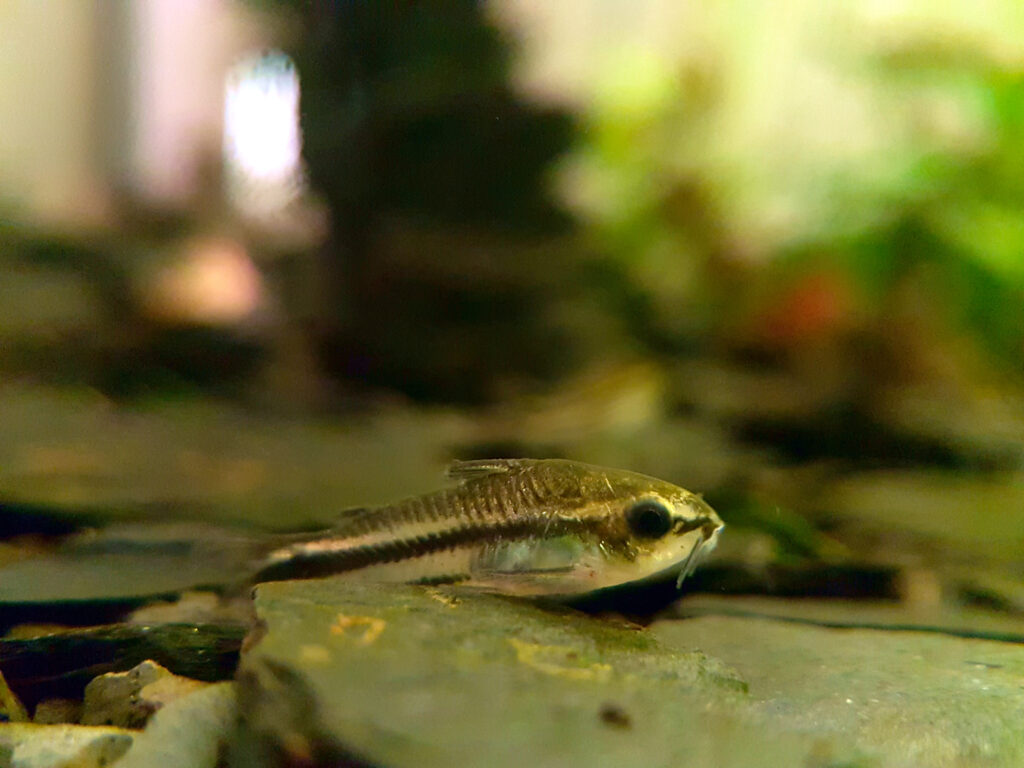
Pygmy Corydoras are a miniature species of catfish that are well-suited as tank mates for Amano Shrimp. These small, peaceful bottom-dwellers have a similar diet to the shrimp and will not compete for food. Pygmy Corydoras are active scavengers and will help keep the tank clean by consuming leftover food and debris.
| Common/Market Names | Pygmy Cory, Dwarf Cory |
| Price Range | $3-$6 per fish |
| Care Level | Easy |
| Behavior | Peaceful, schooling |
| Life Span | 3-5 years |
| Max Size | 1 inch (2.5 cm) |
Otocinclus Catfish
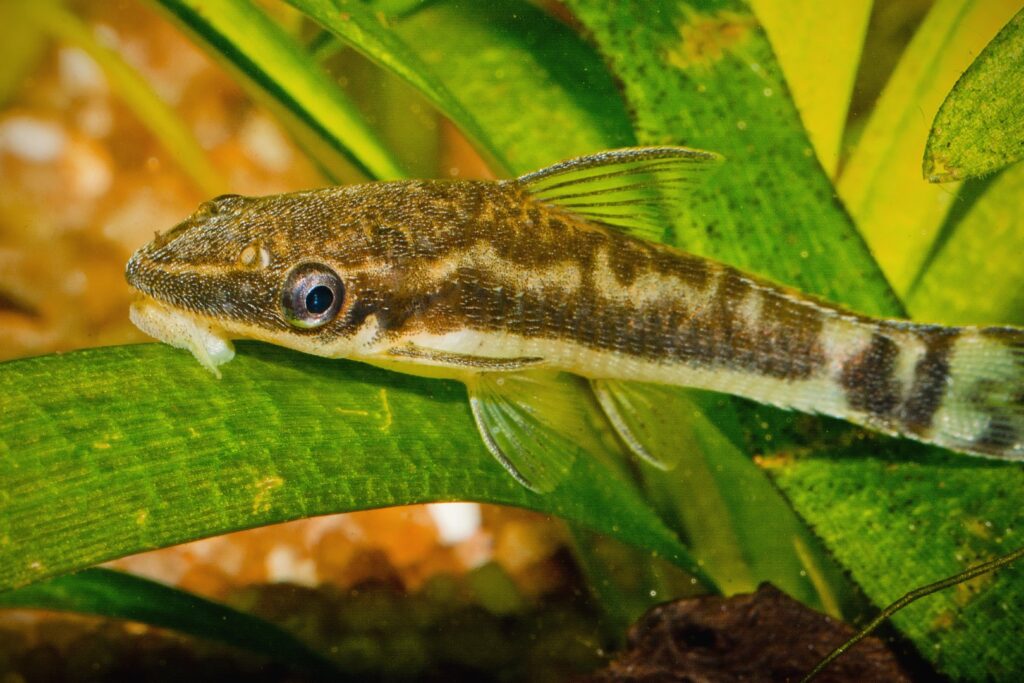
Otocinclus Catfish, also known as Otos, are small algae-eating fish that make excellent companions for Amano Shrimp. These peaceful catfish are known for their voracious appetite for algae and will help keep the tank clean alongside the shrimp. Otos are small and non-aggressive, making them a safe and beneficial addition to an Amano Shrimp tank.
| Common/Market Names | Oto, Dwarf Suckermouth Catfish |
| Price Range | $2-$5 per fish |
| Care Level | Moderate |
| Behavior | Peaceful, schooling |
| Life Span | 3-5 years |
| Max Size | 1.5 inches (4 cm) |
Ember Tetras
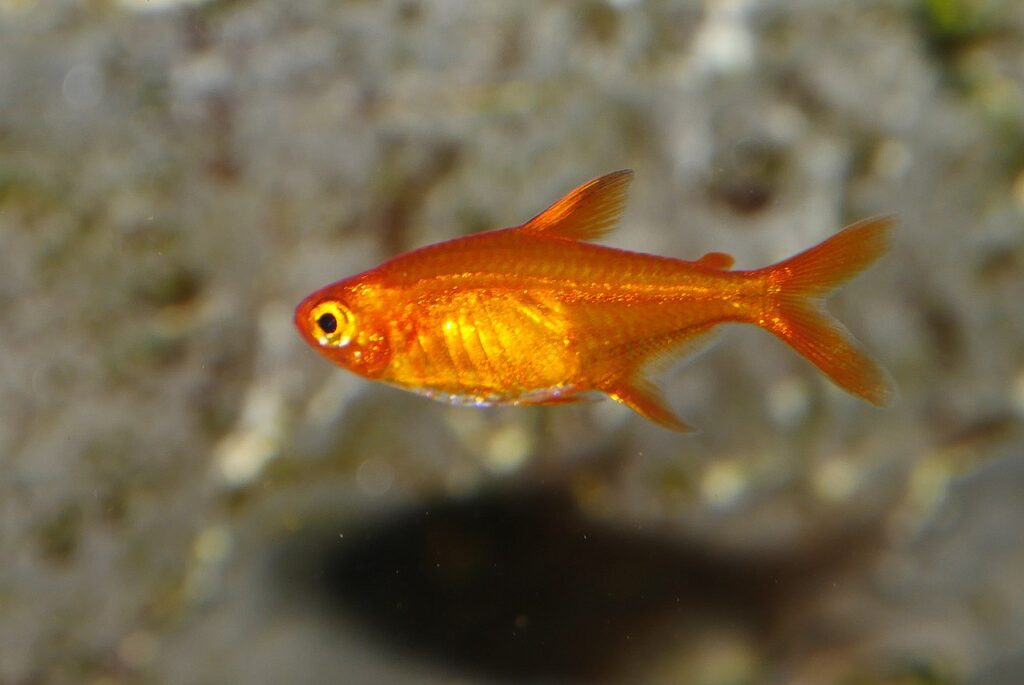
Ember Tetras are a small, vibrant species of tetra that are well-suited as tank mates for Amano Shrimp. These peaceful schooling fish have a striking orange-red coloration and prefer similar water parameters to the shrimp. Ember Tetras are active swimmers and will add visual interest to the tank without disturbing the shrimp.
| Common/Market Names | Ember Tetra, Red Tetra |
| Price Range | $2-$4 per fish |
| Care Level | Easy |
| Behavior | Peaceful, schooling |
| Life Span | 3-5 years |
| Max Size | 0.8 inches (2 cm) |
Endler’s Livebearers
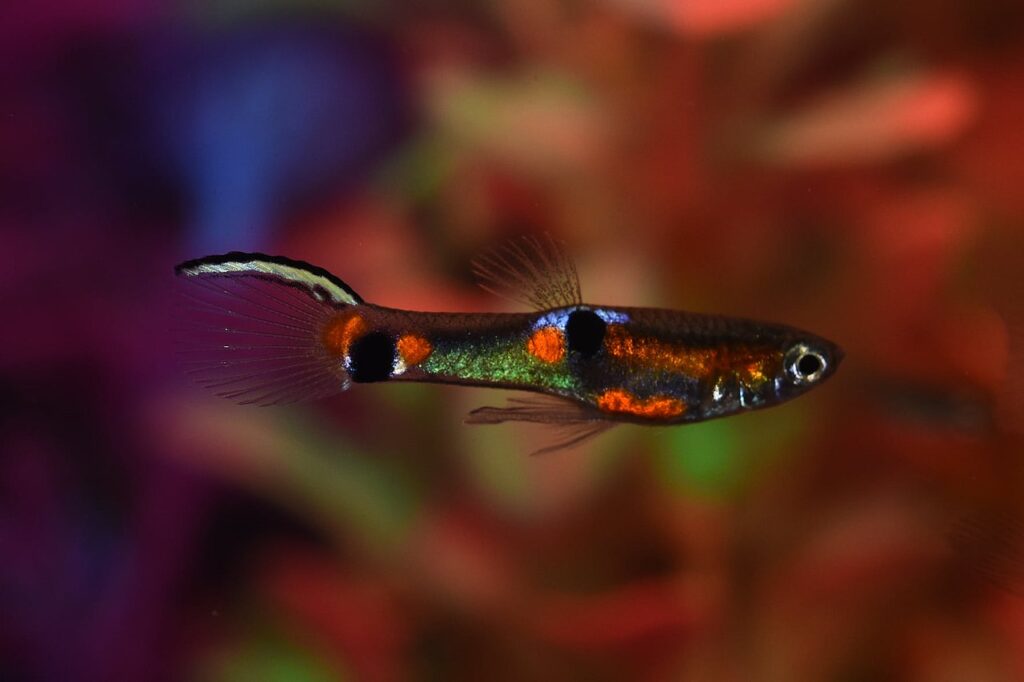
Endler’s Livebearers are a colorful and peaceful species that make excellent tank mates for Amano Shrimp. These small fish are known for their vibrant colors and active swimming behavior. Endler’s Livebearers are adaptable to various water conditions and will not compete with the shrimp for food or resources.
| Common/Market Names | Endler’s Livebearer, Endler’s Guppy |
| Price Range | $3-$6 per fish |
| Care Level | Easy |
| Behavior | Peaceful, active |
| Life Span | 2-3 years |
| Max Size | 1.5 inches (4 cm) |
Celestial Pearl Danios
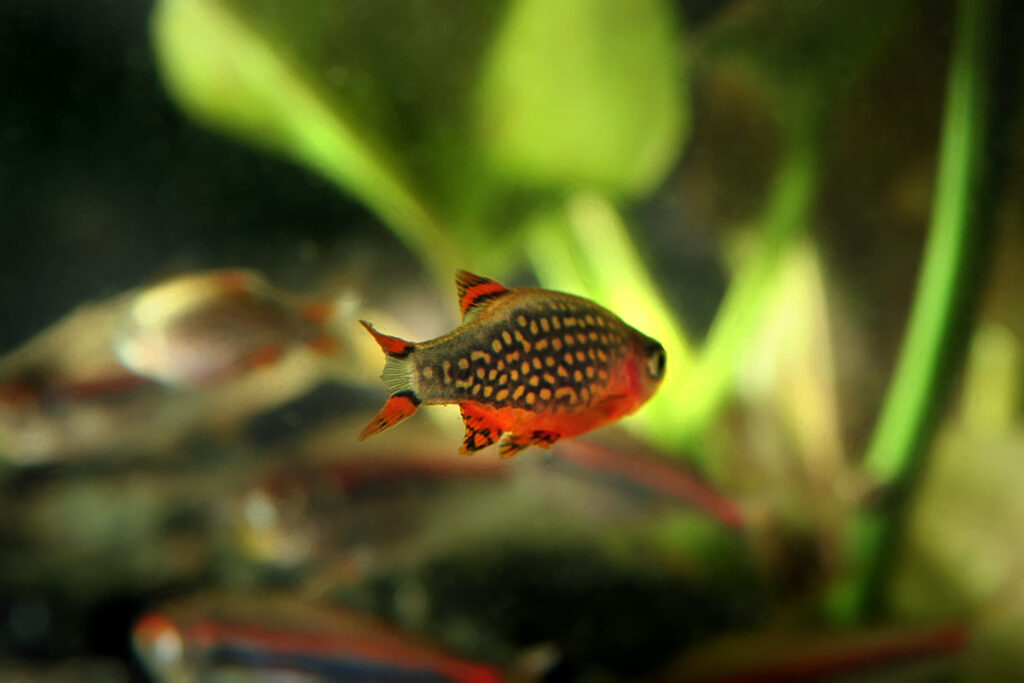
Celestial Pearl Danios, also known as Galaxy Rasboras, are a small and visually stunning species that are compatible with Amano Shrimp. These peaceful fish have a unique spotted pattern and prefer similar water parameters to the shrimp. Celestial Pearl Danios are active swimmers and will not bother the shrimp as they occupy different levels of the tank.
| Common/Market Names | Celestial Pearl Danio, Galaxy Rasbora |
| Price Range | $5-$8 per fish |
| Care Level | Moderate |
| Behavior | Peaceful, schooling |
| Life Span | 3-5 years |
| Max Size | 1 inch (2.5 cm) |
Kuhli Loaches
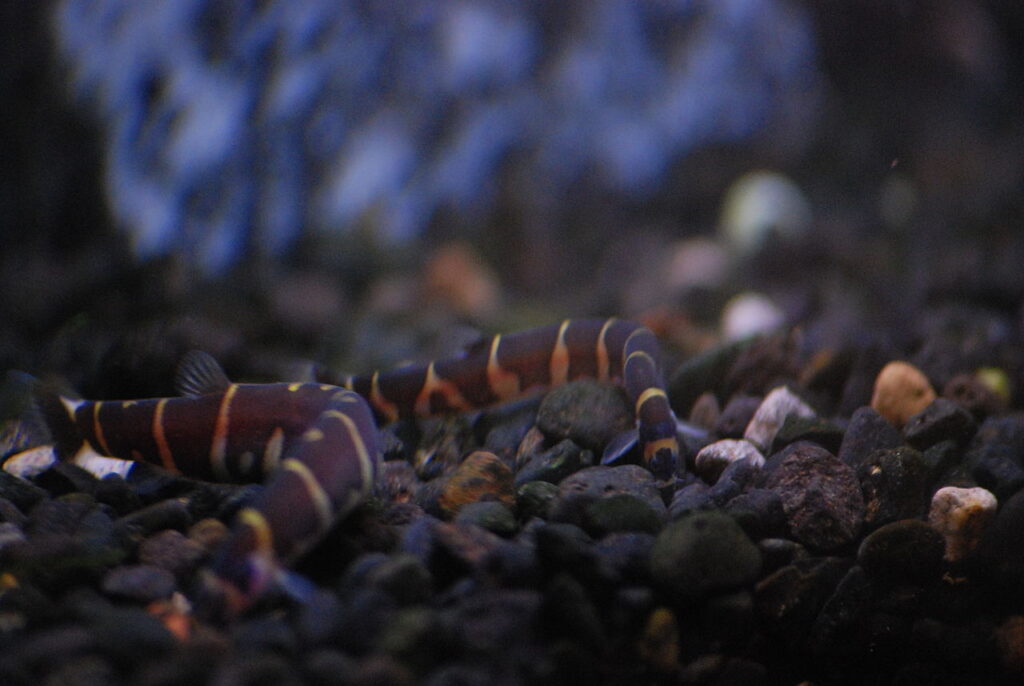
Kuhli Loaches are a peaceful, eel-like species that make excellent bottom-dwelling companions for Amano Shrimp. These nocturnal fish have a unique banded pattern and prefer to hide among plants and decorations during the day. Kuhli Loaches are gentle scavengers and will not compete with the shrimp for food or space.
| Common/Market Names | Kuhli Loach, Coolie Loach |
| Price Range | $3-$6 per fish |
| Care Level | Easy |
| Behavior | Peaceful, nocturnal |
| Life Span | 5-10 years |
| Max Size | 4 inches (10 cm) |
Dwarf Gouramis
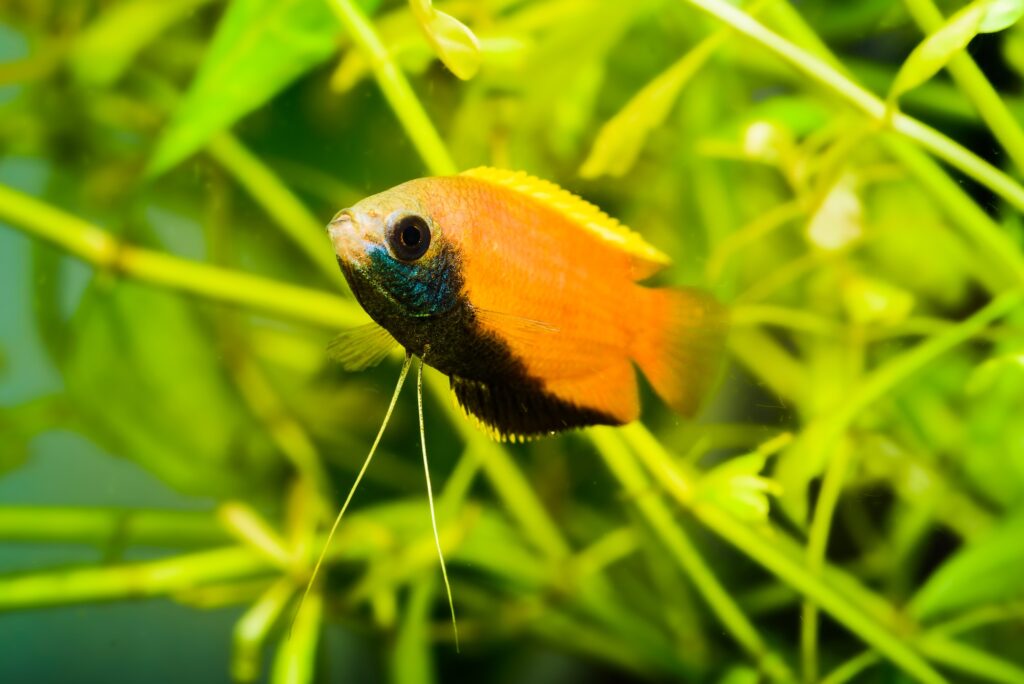
Dwarf Gouramis are a peaceful and colorful species that can coexist with Amano Shrimp in larger aquariums. These fish are known for their vibrant colors and unique labyrinth organ, which allows them to breathe air from the surface. Dwarf Gouramis prefer similar water parameters to the shrimp and will not pose a threat as long as they are well-fed.
| Common/Market Names | Dwarf Gourami, Flame Dwarf Gourami |
| Price Range | $4-$8 per fish |
| Care Level | Easy |
| Behavior | Peaceful, territorial |
| Life Span | 3-5 years |
| Max Size | 3.5 inches (9 cm) |
FAQs about Amano Shrimp
Amano Shrimp FAQs
How do I acclimate my Amano Shrimp to a new tank?
Acclimating your Amano Shrimp to a new tank is a crucial step to ensure their survival. To acclimate your shrimp, float the unopened bag in the new tank for about 15-20 minutes to allow the water temperature to equalize. Then, slowly release the shrimp into the tank, making sure not to net them or cause any unnecessary stress.
What is the best way to handle Amano Shrimp?
When handling Amano Shrimp, it’s essential to be gentle and careful. Use a soft-mesh net to scoop up the shrimp, and avoid touching them with your bare hands. If you must handle the shrimp, make sure to wet your hands first to prevent causing them any harm.
Can I keep Amano Shrimp with other types of shrimp?
While Amano Shrimp can be kept with other peaceful shrimp species, it’s crucial to research compatibility before introducing them to the same tank. Some shrimp species, like the Cherry Shrimp, can be kept with Amano Shrimp, but others, like the Ghost Shrimp, may not be compatible.
How often should I clean the gravel in my Amano Shrimp tank?
Cleaning the gravel in your Amano Shrimp tank is essential to maintain good water quality. You should clean the gravel at least once a week, using a gravel vacuum to remove any debris and waste.
Can Amano Shrimp be kept in a bowl?
No, Amano Shrimp should not be kept in a bowl. Bowls are not suitable for keeping shrimp, as they lack proper filtration and water circulation, which can lead to poor water quality and stress on the shrimp.
How do I know if my Amano Shrimp are stressed?
Stressed Amano Shrimp may exhibit abnormal behavior, such as rapid breathing, lethargy, or hiding. They may also change color or develop white spots on their bodies. If you notice any of these signs, it’s essential to investigate the cause of the stress and take corrective action to ensure the health and well-being of your shrimp.
Can I breed Amano Shrimp in captivity?
Breeding Amano Shrimp in captivity is challenging, but it’s not impossible. To breed Amano Shrimp, you’ll need to provide a separate breeding tank with a temperature range of 68-72°F (20-22°C) and a pH level of 6.5-7.5. You’ll also need to ensure that the tank is well-oxygenated and has plenty of hiding places for the shrimp.
How long do Amano Shrimp eggs take to hatch?
Amano Shrimp eggs typically take 2-3 weeks to hatch, depending on the water temperature and quality. After hatching, the larvae will go through several stages of development before becoming adult shrimp.
Can I keep Amano Shrimp in a tank with a sand substrate?
Yes, you can keep Amano Shrimp in a tank with a sand substrate. However, it’s essential to choose a sand that is specifically designed for aquariums and is safe for the shrimp. Some types of sand, like play sand or construction sand, can be harmful to the shrimp and should be avoided.
How often should I feed my Amano Shrimp?
Amano Shrimp are grazers and should be fed several times a day. You can provide them with a variety of foods, such as algae wafers, blanched vegetables, and commercial shrimp pellets. It’s essential to only feed them what they can consume within a few hours to prevent overfeeding and poor water quality.
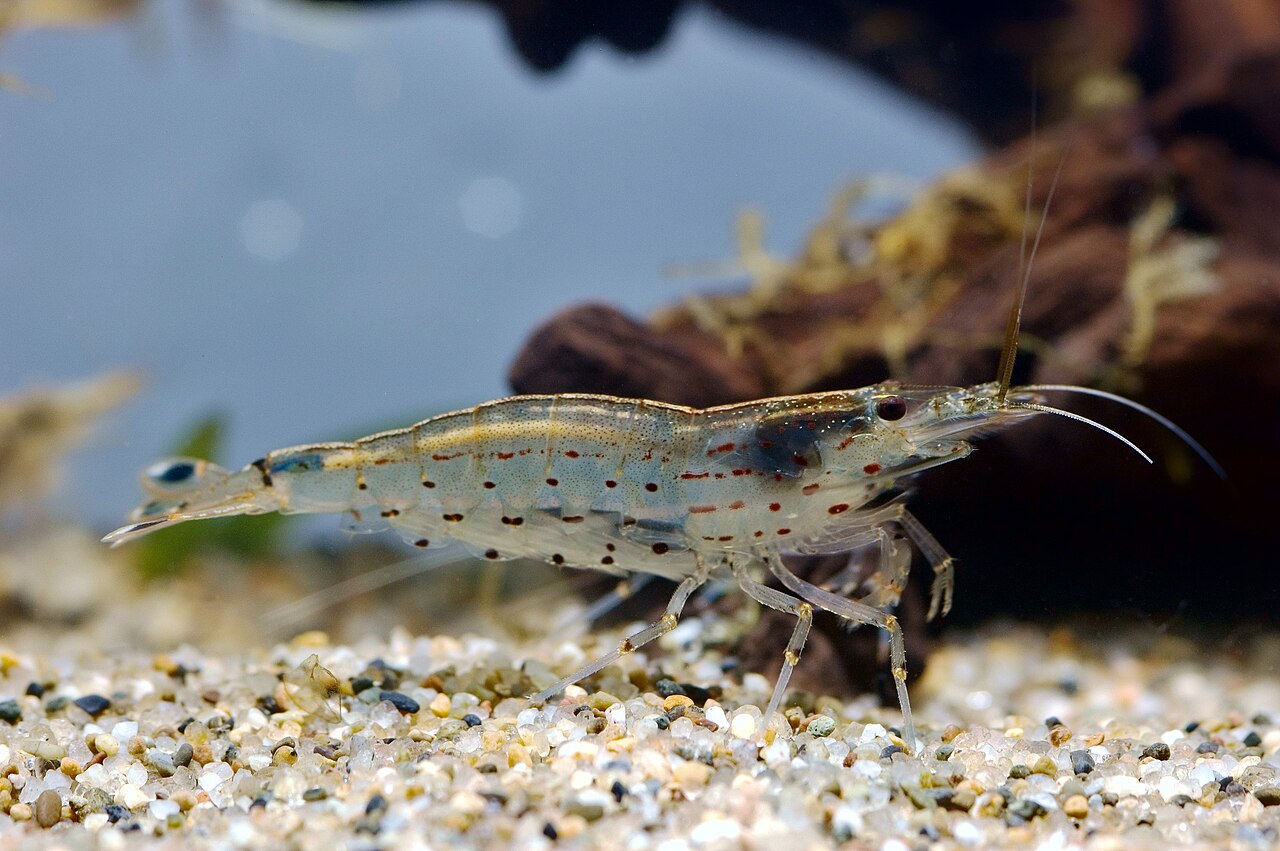
Leave a Reply